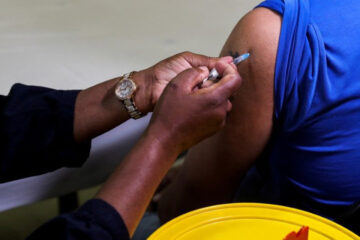EMMA RUMNEY and ALEXANDER WINNING
SOUTH Africa’s National Treasury plans no further easing of its coronavirus loan scheme criteria to stimulate uptake, it told Reuters, meaning almost a third of the government’s 500 billion rands ($30 billion) relief package may end up going unused.
The 200 billion rand loan programme is a pillar of South African efforts to shield small businesses from the impact of the pandemic. Conditions were tweaked in July, including expanding who qualifies and extending the repayment grace period, after relatively few firms applied for the loans.
Still, only 14.5 billion rand had been paid out through August. The Banking Association of South Africa (BASA) estimates at most around 44 billion rand will be deployed by January.
Despite that, the treasury said it was not planning to ease the scheme further to increase disbursals.
“The low uptake of the scheme also suggests that businesses do not want to incur more debt in light of the economic uncertainty,” it said in response to Reuters’ questions.
It added that the economy’s reopening following a months-long lockdown meant firms would now need less financial support. The treasury said it was also not considering releasing any of that amount as grants, as suggested by some trade unions.
COVID-19 has deepened a recession in Africa’s most developed economy that predates the pandemic. Banks have reported a spike in bad loan charges.
Under the scheme, the government pledges to reimburse banks for a portion of any eventual losses on qualifying loans with the aim of lowering borrowing costs and making credit available to businesses that might otherwise be considered too high-risk.
DEBT NOT WANTED
By the end of August, some 35% of 42,202 loan applications had been rejected for not meeting the scheme’s or banks’ own risk criteria, according to BASA. The programme has attracted significantly less interest than similar initiatives launched in the UK and elsewhere.
More funds – over 30 billion rand – were disbursed under other earlier relief initiatives from lenders, such as payment holidays.
This, as well as high levels of uncertainty and low business confidence, suppressed demand for the guaranteed loans, BASA has said.
South Africa had to balance the desire to extend relief to businesses against the need to safeguard the treasury’s already strained resources, said Kuben Naidoo, head of South Africa’s Prudential Authority.
“If we had a different fiscal position, I think we could have designed the scheme differently,” he said, though he added that the scheme had contributed to easing the impact of the crisis, along with lenders’ other relief measures.
And the need the initiative was designed to meet – buttressing businesses during the lockdown – no longer exists, said Stuart Theobald, chairman of financial consultancy Intellidex.
He said the economy now faces other problems, namely a recession, but in such an environment firms want equity, not debt.
Business owners still need support, said Alan Pullinger, CEO of major lender FirstRand, but they do not want loans they are not sure they can repay.
“I think if (government) really want to get … 200 billion rand out the door, they have got to change it from a loan scheme to a grant. And the reality is we can’t afford it.”














